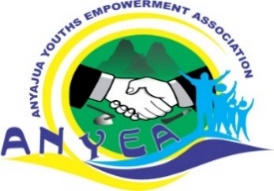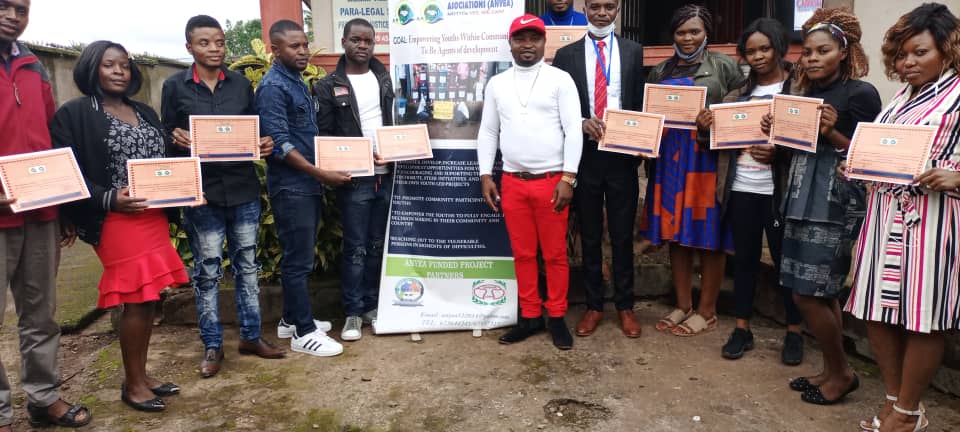ANYEA on a Workshop aim at strengthening the capacities of its members and youth leaders.
The Annual General Assembly AGM is the policy defining institution of the Association. Being the supreme organ of the organisation it had stand out to be the most awaited and well plan come together of the association. Though supposed to be holding within the Anyajua soils, it had seen its activities shifted out of Anyajua since 2018 due to the Anglophone crisis. This year, it was hosted by the Bamenda branch which was holding under the theme’ strengthening the capacities of ANYEA and youth leaders to meet up with humanitarian and societal challenges. Being a two day event, the run-down of the below report briefly paints out the picture of the 2 days.
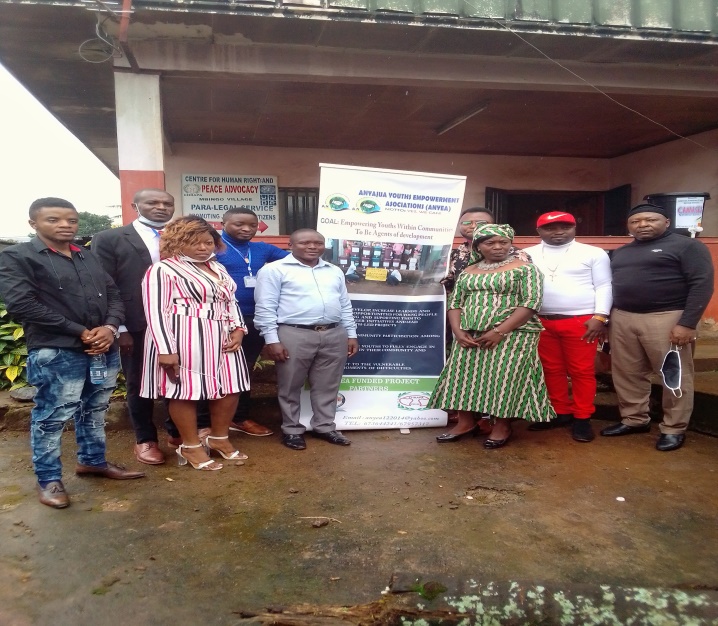
Day one 05/09/2020 ‘’workshop to engage more youths within Anyajua and its environs to be agents of development, peace building within their respective communities’’. The need for this activity was observe due to the problem of human resource identified within ANYEA and the reluctance of any youths to get engage in community and decisions taking in their respective communities.
With the registration of participants open to the general public, twenty six participants finally indicated the willingness to be part of the training. We had participants from communities like Ntum, Tumuku, Elemighong, Ntungfe, Twalatwal, Chuaku, Ashing, Dichami, Anjin, and lower Anjin. These youths were selected from the criteria of having youth led groups within their respective communities.
The facilitators were carefully selected based on their experience in the field of youth’s organisations and their experience in the field of humanism.
Acknowledging that all participants were properly identified and registered, the project coordinator in the person of Elvis Yuh, presented a picture slide of ANYEA activities with narrative on the various slides that lasted for 20minutes. The objectives of the project and workshop were then revealed to the participants as follow.

Picture slide presentation by ELVIS Yuh
Empower the youths with necessary skills to be agents of community development.
- Ignite in the spirit of the youths the ability to identify a problem, propose a solution to it through a project proposal.
- Empower youths to take part in decision taking within their respective communities.
- How you can raise funds for your different projects.
- How youths could engage in peace building and conflict resolution within their communities.
- To promote the spirit of volunteering among youths within their communities.
- Strengthening our capacity on project writing.
- The trained leaders should conduct a step down restitution on the knowledge acquired in their respective communities.
- Instill a different mindset of associative groups engaging in development while placing mankind at the centre of its policies.
Mainstreaming covid.19 barrier measures in the project.
Module 1; Business plan development and management (11:15am-11:57am) by Mr Yong Killian who is an expert in Telecommunication, an entrepreneur, founder and director of Trackline Engineering Consultancy and Security Services. He started with a question as to why a business plan is necessary. One of the advanced reasons was that it is important because it helps the individual to know if the business is going to work. Only participants who attempted answering the question were handed hard copies of the presentation, that is, a guide for establishing a business plan. A business plan is a roadmap which clarifies and structures the business idea, and maximises the chances of survival in the business as it helps in tracking progress in business. It can equally serve for funding and as well is necessary for investors and lenders. He stressed on the fact that it is important to see the market that is, the available customers for every business before starting the business. In case of rivalry, the value proposition is important in order to ascertain a steady clientele. A layout of a business plan (in 14 headings) as well as what should be included in each of the 14 points were well explained. The presentation on business plan development and management was sandwiched by lots of practical issues in relation to the presenters business as well as related examples of other businesses and where most failures in business arise. After 42 minutes of a brilliant presentation that kept all the participants smiling and attentive, the presenter left the participants with a statement “A dream written down with a date becomes a GOAL, a goal broken down into steps becomes a PLAN, and a plan backed by action becomes REALITY”. This was closely followed by a question and answer session. From the powerful questions that erupted, it was evident that the participants fully understood the presentation.
Module 2; Gender Based Violence (GBV) and Case Management, done by Madam Edith Mufua from CHRAPA. The presentation started with a clear distinction between sex and gender. Sex refers to physical characteristics that …………gender refers to the social attributes between a man and a woman. Gender based violence …………Three root causes of GBV were outlined as; harmful cultural practices, power, and non-respect of human rights. Some minor causes of GBV were outlined to be; drug abuse, ignorance, occultism, lack of women empowerment in most cases leading to economic deprivation, etc. Unwanted pregnancies, rape, loss of sexual drive, trauma, abuse, depression and death, were among the outlined consequences of GBV. It was advised that it is important that GBV cases be taken to the hospital immediately in order to rescue the survivor before seeking the consent later.

The workshop was punctuated by a coffee break by all the participants.
Module 3; Funds raising (donations), writing winning proposals and networking in non-profit making associations by Mr Tamfu Gerard Samba which started at 1:09pm. He started the session with knowing the likes and dislikes of all participants. This was closely followed by the expectations of the presentation by participants. Most expectations were centred on how to raise funds and to whom to write winning proposals (a plan or suggestion, especially a formal or written one, put forward for consideration by others) to. Questions prompt up on why fund raising? The presenter advised that objectives for fund raising should be made specific in order to better know the target (donors). Participants were made to understand that fund raising can be done locally, nationally, regionally, continentally and internationally. So, it’s important one stays observant on day to day live to closely monitor and note the various donors to projects in other organisations that have objectives related to yours. Lobbying was explained to be a term used by business persons, and that in NGOs, it is called Advocacy. It’s important that NGOs maintain a good working relationship with its donors in order to ascertain more future funding. As regards the various fund raising methods, project or proposal writing was outlined to be the best method used by NGOs. Some fundraising sites one can go to apply for funding are: the pollination project (which funds throughout the year, reviewing proposals after every 4 weeks), funds for NGOs, opportunity desk, African Women Development Funds (accept proposals 4 times a year), Internet – Google search, UN – Agency websites. Talking on the good tips in proposal writing, it is important to; follow the directives of the donor, don’t promise what you can’t deliver, plan your program thoroughly and tell the whole story, make your proposal neat and presentable, make the deadline (important to submit proposals before the closing date). Participants were equally briefed on the common mistakes usually made during proposal writing, some of which were; setting poor or vague objectives, didn’t include passion that the problem exists, didn’t make the case, budget didn’t add up, applied regardless of funding guidelines, no one proofread your proposal before its submission, etc. Last on the presentation was on networking which falls under the last (17th) sustainable development goal on partnership to achieve the goal. It was stressed here that networking is important because, it eases work, avoids duplication, etc. To conclude, participants were briefed on raising funds for a business. It’s important to know the banks products and services (short, mid-term and long-term loans) so as to know how to negotiate.
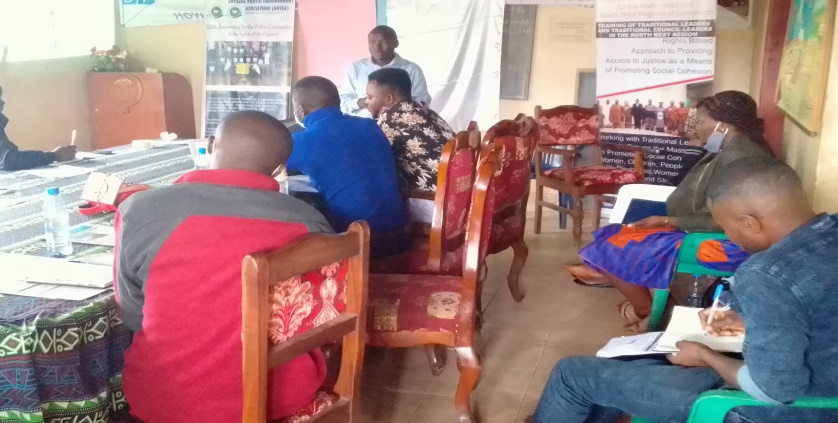
Mr.Samba Gerard presenting.
Module 4; Organisational management and sustainability by Mr Tata Nelson Berinyuy. The learning outcomes for this presentation were: understanding how ANYEA functions …..? Using ANYEA to build a viable organisation, how to plan and implement actions that will enable ANYEA to achieve its goals, organisational strengthening, adapting to both internal and external change, and sustainability. Training content: part 1 – organisational development/institutional management: program/financial management such as record keeping, internal control, budgeting, financial reporting, Part II – organisational sustainability: strategic sustainability, program/project sustainability, personnel sustainability, financial sustainability and how to achieve sustainability. Management is a broad term that has to do with organising, planning, controlling, leading, coordinating, forecasting, budgeting, etc. Organisational resources must always be connected to its goals/objectives. It is important that in every organisation, the three levels of management (strategic or top e.g AGM, Board of directors, etc mid-term or middle level e.g general manager, financial manager and operational or low level e.g project managers) are known in order to better run the organisation. Strategic plans of actions are long-term say 1-3 years (middle) 5 years and above (top) while operational plans are short term (less than 1 year – low level). Every organisation should have a vision (from top management) that is embraced and recited by all. Programme areas are developed from organisational goals and objectives (from mid-term and operational levels). Record keeping (in a cash book) is a very important aspect in financial management. Two records are necessary for every transaction; namely, records for public (external stakeholders) consumption and records for internal stakeholders (persons who have interest in the organisation). Internal audit department is equally necessary. Financial reporting is done to funders at the end of a project and is best done backed by receipts that have a letter head, phone number, as well as a ‘PAID’ stamp on it. Organisational sustainability is how the activities are been run while ensuring its future. It’s important to from start allocate say 5% for strategic sustainability of the organisation. A lot was elaborated on program sustainability, personnel sustainability (motivation, etc) and financial sustainability (it’s necessary the organisation engages in lucrative non-risky businesses that requires less supervision) in an organisation. In order to achieve sustainability PLAN to develop a PLAN. To conclude, the presenter advised that ANYEA should develop their strategic and operational plans of actions.
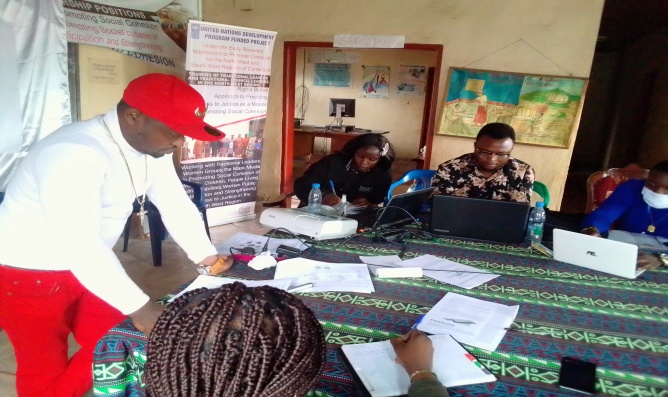
Mr.Tata Nelson presenting on organisational management and sustainability
Module 5; Conflict Management and Peace Building by Mr Elvis Yuh. Whose presentation was centred on defining concepts related to the topic like peace, conflict, peace building, conflict resolution, mediation, negotiation and community mediation. The causes of conflicts, its phases and what could be done to resolve the conflict. The great attention was given on the mechanism to resolve conflict within our respective communities with a development of standard of operation SOP by the participations bases on sample situations presented to them; Investigating the causes of the misunderstanding, Documentation and doing research on the matter to understand similar conflict, Organizing pre talks to listen to their claims separately, Gathering the conditions of the parties for conflict resolution, Identifying a neutral ground conducive for both parties for mediation, Communication on what is necessary to the public, Calling of the negotiation event, Ensuring the concessions( compromise) of both parties, Talks, Agreement that is documented and signed by witnesses and facilitators, Implementation and evaluation. He ended the presentation by challenging the youths by giving them reasons why they should involve in the peace building process with argument likes; they are the most affected group of persons in crisis, It’s the most dynamic set of the population capable of driving a change, To protect their future, They have the ability to learn and adapt to changes, They have the ability to amend sociopolitical reforms, It’s a strong force needed by the politics and thus highly listen, The people used in conflicts are youths and they can better understand their peers, They can easily be mobilized and engaged in the peace process. Which could be summarized in the statement’’ The adage that says youths are the leaders of tomorrow is a scam. Leadership should not be considered as a factor of age and providing appropriate governance context s would likely enable young people to flourish as leaders today’’. So it’s time to take up your destiny at hand and stop waiting for tomorrow cause tomorrow is today.

Elvis Yuh presenting on conflict management and peace building
The impact of the workshop
- 27 youth leaders saw their skills enhance in the organizational management and decision taking in their respective communities.
- A network of youths known as the Belo Youth Connect was created to facilitate the exchange of ideas in transforming lives in our respective communities.
- Young leaders were encouraged to take part in the peace building process through the enhancement of their abilities in conflict resolution.
- Two of the resource persons accepted to mentor the organisation to its maturity stage.
- A network of youths leaders were trained and equipped with necessary skills to carry out step down meetings on peace building in their respective through their empowerment with attestations.
A social dialogue platform was created among the attendees to freely express their ideas and finding solutions to their daily challenges and networking with youths of other communities.
 Cross section of resource persons and ANYEA Staff
Cross section of resource persons and ANYEA Staff
Report drafted by Elvis YUH
FOR ANYEA
elvisyuh89@gmail.com/ 673 644 241
